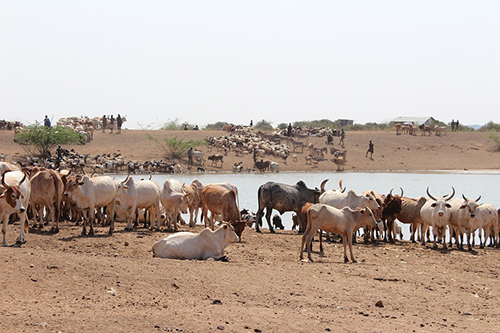Apr 22 2016 What can a watering hole teach us about the intersector?
By Frank Weil, Chairman of The Intersector Project
For many Americans, the term watering hole may give rise to images of their local pub or bar. But it has another meaning. A watering hole is a small natural basin in the earth that collects water, and where animals come to drink — often animals who may not otherwise be found together, and sometimes animals who, under different circumstances, would be enemies.
What can a watering hole teach us about the intersector — the notional space where government, business, and non-profit sectors share expertise, resources, and authority to address problems that cannot be solved by one sector alone?
In a way, the intersector is a watering hole.
To illustrate what that might mean, consider Robert Putnam’s study of regional governments in Italy during the 1970s. During his investigations, Putnam discovered that quality governance was related to, of all things, the number of choral societies in a region. What is it about singers that could so dramatically improve the quality of life in their communities? Choral societies brought together many different kinds of community members who had very little in common other than their shared interest in singing. Ultimately, Putnam realized that it was not the singing that made a difference. It was the fact that after these people came together to sing, they would gather to gossip about local issues and to form trusting relationships in the process with people they probably never would have otherwise met. When problems arose in their local communities, lines of communication were already in place to facilitate finding solutions.
Choral societies are a type of watering hole, just as today’s Rotary clubs, Kiwanis clubs, book clubs, and more are watering holes — places for individuals from different walks of life — “animals of different stripes” — to meet and connect over commonalities and to build the type of mutual understanding that enables individuals to understand and want to work together.
One of the basic ideas behind intersector is that it’s a space where individuals who come from different backgrounds can exchange ideas to produce better solutions. The watering hole is a naturally occurring phenomenon — both in the animal and human world — that shows that when united by a common desire or interest, people who are unlike will come together and form the trusting relationships that are the first critical step in intersector collaboration.

